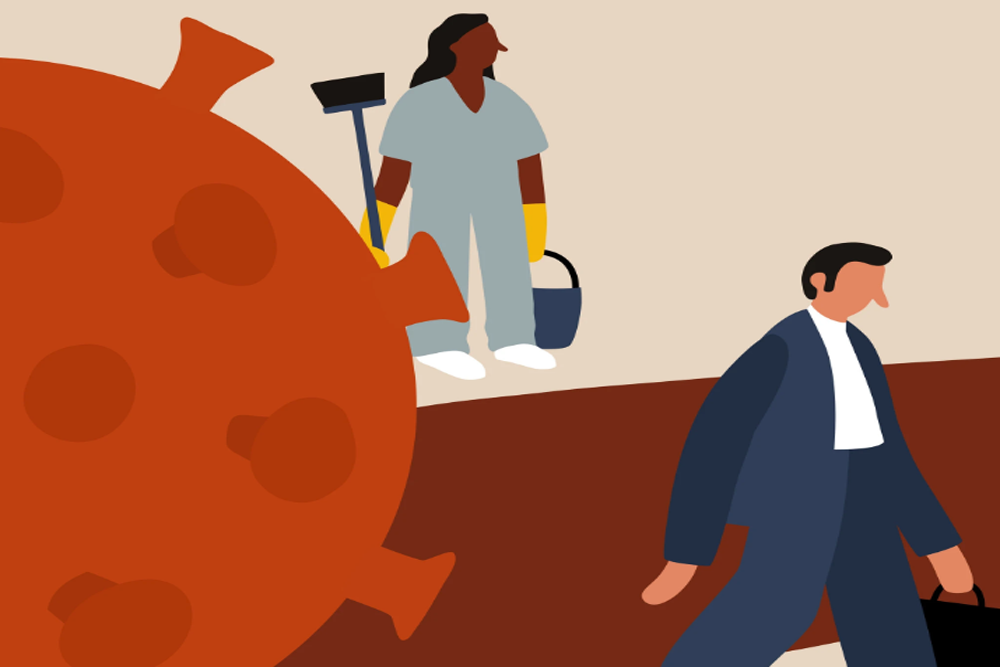
Preschool Remote Learning Newsletters
April 1, 2020
Some cities see jumps in domestic violence during the pandemic
April 8, 2020New York Times. 31. March. 2020. By Alisha Haridasani Gupta. Today is Equal Pay Day, which represents just how much further into the calendar year American women would have to work to earn what their male counterparts made last year.
Women in the United States who work full time, year-round, earn on average 82 cents for every dollar that a man earns, according to Census Bureau data analyzed by the American Association of University Women. Women of color fare far worse: Black women earn 62 cents on the dollar and Hispanic women 54 cents.
This year, as a pandemic cripples the economy, these inequities will come into sharp focus, as many women confront the coronavirus on the front lines or lose their jobs because of the economic downturn.
The crisis may also make the inequities worse — at least in the short term, according to a new paper examining the impact of the virus on the economy by researchers at Northwestern University, the University of Mannheim in Germany and the University of California, San Diego.
“The Covid-19 pandemic will have a disproportionate negative effect on women and their employment opportunities,” the authors write.
However, the paper suggests that the shift in workplace culture and increased flexibility — catalyzed by Covid-19 — may also promote gender equality in the long run.
I spoke with Matthias Doepke, an economics professor at Northwestern University and one of the authors of the research paper, to explain the economic consequences of the virus for women and what the recovery might look like.The interview has been shortened and edited for clarity.
Walk us through the main takeaways from your paper. What are some of the ways that Covid-19 will affect women’s standing in the economy?
In our paper, we look at how the current downturn is different from a regular recession.
We know that regular recessions have an uneven impact on women and men, but in the opposite direction. In all major recessions, including the financial recession 10 years ago, many more men lose their jobs. This has to do with two things: Usually the most affected sectors are things like construction and manufacturing, which are male-dominated. And the second thing is this notion of “insurance in the family,” that some married women decide to actually work more during a recession to make up for the job loss of the husband.
But in this downturn, already you can see that it’s quite different. The sectors that are going to be most affected — for example, the restaurants, which are all closed, or the travel sector — have fairly high female employment. More women will lose jobs.
But the much bigger thing for most people who live with children is the extra child care needs — everybody with young kids has to provide all of the child care all of a sudden. And we argue that the vast majority of this extra work will fall on women, therefore making it difficult for them to work as usual.
Your report mentions the possibility of cultural change in the long run. What do you mean by that?
Big crises have the potential to bring about cultural change. World War II was a bit like that because, for the first time, many married women with children joined the labor force, and there’s a lot of research showing this had a really persistent impact on social norms.
There’s some potential for that here from two quite different perspectives. One is from the perspective of the employers. Many businesses are adopting work-from-home policies, and that’s going to stick. These businesses are going to invest in the technology, they’re going to learn how to do this, they’re going to see that there’s some advantage to this. And we expect that this added flexibility is going to stay — not completely — but to a large extent after the crisis. It’s really a benefit to everybody, to all families, but given that right now mothers bear the burden of child care, in a relative sense, they’re going to benefit from that.
The other side of this is the cultural norms side. Whenever you look at the division of labor in the household, it’s really not just that whoever earns more works more. A lot has to do with cultural expectations. For example, in couples where the wives may have a higher income than the husbands, they often still do the majority of the child care.
So even though on average women will do most of this additional child care right now, for many couples it’s going to be the other way around, probably for the first time. If the wife works in medicine, for example, or in some other essential sector where she can’t work from home, then just by necessity the father will be the main provider of child care.
Research does suggest that even these temporary changes have quite a persistent effect. We cite a study from Spain where they introduced a leave specifically for fathers, just two weeks, to take care of a newborn child, and found that men ended up doing more of the child care in the future.
Do you think the $2 trillion stimulus package recently passed by Congress — which includes direct cash payments for individuals and children — will help the situation?
One thing we would like to have seen, which we would argue is better than paying for unemployment, is to essentially subsidize keeping employment ongoing. So that’s a system where essentially you tell firms that if you keep these employees and reduce the hours, the government will then make up a large fraction of lost income. It’s a way of preserving employment so that when the crisis is over, the workers can go right back to work. This is something that Germany did in the financial recession in 2008, and you see that the employment losses there were much, much smaller than, for example, in the United States.




